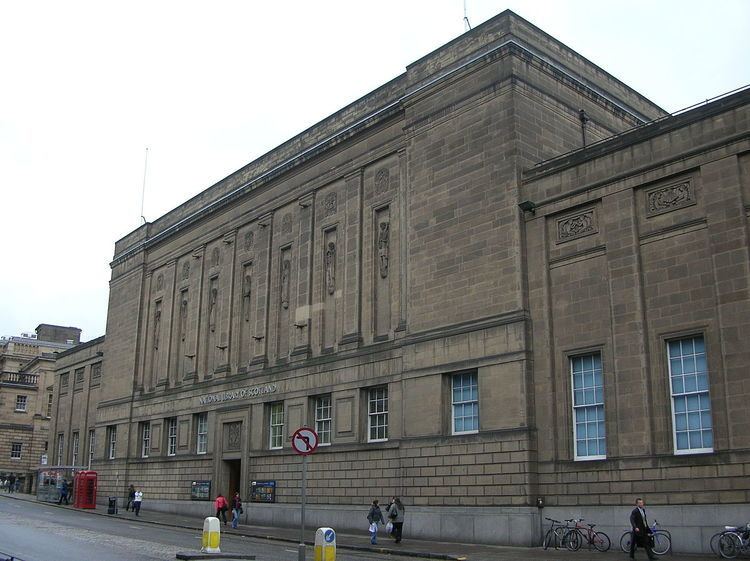Name Reginald Fairlie Died October 27, 1952 | Role Architect | |
 | ||
Reginald Francis Joseph Fairlie FRSE FRIAS FRIBA RSA (7 March 1883 - 27 October 1952) was a Scottish architect. He served as a commissioner of RCAHMS and on the Ancient Monuments Board for Scotland.
Contents
Life
Born at Kincaple, Fife, he was the son of J. Ogilvy Fairlie of Myers (1848-1916) and Jane Mary Fairlie. He was educated in Birmingham.
He was apprenticed to Robert Lorimer in 1901 and much of his style echoes that of Lorimer. Ian Gordon Lindsay trained under him (1927–30).
A faithful Roman Catholic, Fairlie designed many war memorials, churches and restorations of castles. From a long list of commissions only a handful fall outside the borders of Scotland.
He set up office at 14 Randolph Place in 1908.
He served in Royal Engineers in World War I. His older brother John Ogilvy Fairlie was killed in action on 25 September 1915. With the death of his father on 28 September 1916 Reginald fell heir to the family estate of Myers. In the early 1920s he designed a series of war memorials, largely working with the sculptor Alexander Carrick.
After the war (around 1920) he joined forces briefly with the architects Reid and Forbes and worked on some award winning housing schemes including Northfield in Edinburgh. He set up his own office at 7 Ainslie Place (which was also his home) in 1925 but remained linked with Reid and Forbes until 1926.
Curiously James Smith Forbes of Reid and Forbes lodged with Fairlie even after the end of their business partnership. His neighbour at 7 Ainslie Place was Francis Cadell the artist and they became friends and remained so even after Cadell moved house. He was also close friends with the sculptor Hew Lorimer whom he possibly met during his connection with Robert Lorimer as Hew was his second son. He pulled Hew into some of his projects including the prestigious National Library project where Hew provided the figurative sculpture on the frontage.
He generously passed the commission for the restoration of Iona Abbey to his friend and employee Ian Gordon Lindsay in 1938.
Fairlie lived the life of a bachelor with a personal servant, Robertson, serving him faithfully until death in 1938. He leased Inchrye Abbey from 1931 to 1939 for shooting parties and falconry. Work ceased on most projects during World War II, including his major commission for the National Library. The work on the library did not resume until 1950.
Fairlie died in St.Raphael’s Nursing Home in the Grange, Edinburgh but was buried with his parents in the Eastern Cemetery in St Andrews. His grave stone was carved by his friend Hew Lorimer. It lies on the eastern wall, towards the south-east corner.
Achievements
Fairlie rose to the position of Chairman of the Directorate of Ancient Monuments.
In 1933 he became elected a full member of the Royal Scottish Academy.
In 1937 he received a doctorate from the University of St Andrews (LLD) for his work on St Salvator’s Chapel there.
He was also a member of the Royal Fine Art Commission and the Forestry Commission.
Principal Works
His works include:
Memorials by Fairlie
Memorials he designed include:
